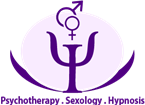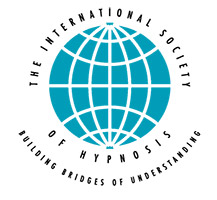
Repetitive Pseudo Heart Attack
Panic attacks are periods of intense fear or apprehension that are of sudden onset and of relatively brief duration. Panic attacks usually begin abruptly, reach a peak within 10 minutes, and subside over the next several hours. Often, those afflicted will experience significant anticipatory anxiety and limited symptom attacks in between attacks, in situations where attacks have previously occurred. The effects of a panic attack vary. Some, notably first-time sufferers, may call for emergency services.
Many who experience a panic attack, mostly for the first time, fear they are having a heart attack or a nervous breakdown. Experiencing a panic attack has been said to be one of the most intensely frightening, upsetting and uncomfortable experiences of a person's life and may take days to initially recover from. Repeated panic attacks are considered a symptom of panic disorder. Screening tools like Panic Disorder Severity Scale can be used to detect possible cases of disorder, and suggest the need for a formal diagnostic assessment.
Sufferers of panic attacks often report a fear or sense of dying, "going crazy," or experiencing a heart attack or "flashing vision," feeling faint or nauseated, a numb sensation throughout the body, heavy breathing (and almost always, hyperventilation), or losing control of themselves. Some people also suffer from tunnel vision, mostly due to blood flow leaving the head to more critical parts of the body in defense. These feelings may provoke a strong urge to escape or flee the place where the attack began (a consequence of the sympathetic "fight-or-flight response") in which the hormone which causes this response is released in significant amounts. This response floods the body with hormones, particularly epinephrine (adrenaline), that aid it in defending against harm.
A panic attack is a response of the sympathetic nervous system (SNS). The most common symptoms may include trembling, dyspnea (shortness of breath), heart palpitations, chest pain (or chest tightness), hot flashes, cold flashes, burning sensations (particularly in the facial or neck area), sweating, nausea, dizziness (or slight vertigo), light-headedness, hyperventilation, paresthesias (tingling sensations), sensations of choking or smothering, difficulty moving and derealization. These physical symptoms are interpreted with alarm in people prone to panic attacks. This results in increased anxiety, and forms a positive feedback loop.
Often, the onset of shortness of breath and chest pain are the predominant symptoms; the sufferer incorrectly appraises this as a sign or symptom of a heart attack. This can result in the person experiencing a panic attack seeking treatment in an emergency room.
Panic attacks are distinguished from other forms of anxiety by their intensity and their sudden, episodic nature. They are often experienced in conjunction with anxiety disorders and other psychological conditions, although panic attacks are not usually indicative of a mental disorder.
Triggers and causes
• Long-term, predisposing causes — Heredity. Panic disorder has been found to run in families, and this may mean that inheritance plays a strong role in determining who will get it. However, many people who have no family history of the disorder develop it. The onset of panic disorder usually occurs in early adulthood, although it may appear at any age. It occurs more frequently in women and often in people with above average intelligence. Various twin studies where one identical twin has an anxiety disorder have reported an incidence ranging from 31 to 88 percent of the other twin also having an anxiety disorder diagnosis. Environmental factors such as an overly cautious view of the world expressed by parents and cumulative stress over time have been found to be correlated with panic attacks.
• Biological causes — obsessive compulsive disorder, post traumatic stress disorder, hypoglycemia, hyperthyroidism, Wilson's disease, mitral valve prolapse, pheochromocytoma, and inner ear disturbances (labyrinthitis). Parasitic infection can cause psychiatric symptoms.
• Phobias — People will often experience panic attacks as a direct result of exposure to a phobic object or situation.
• Short-term triggering causes — Significant personal loss, including an emotional attachment to a romantic partner, life transitions, significant life change, and as seen below, stimulants such as caffeine or nicotine, can act as triggers.
• Maintaining causes — Avoidance of panic provoking situations or environments, anxious/negative self-talk ("what-if" thinking), mistaken beliefs ("these symptoms are harmful and/or dangerous"), withheld feelings, lack of assertiveness.
• Lack of assertiveness — A growing body of evidence supports the idea that those that suffer from panic attacks engage in a passive style of communication or interactions with others. This communication style, while polite and respectful, is also characteristically un-assertive. This un-assertive way of communicating seems to contribute to panic attacks while being frequently present in those that are afflicted with panic attacks.
• Medications — Sometimes, panic attacks may be a listed side effect of medications such as Ritalin or even fluoroquinolone type antibiotics. These may be a temporary side effect, only occurring when a patient first starts a medication, or could continue occurring even after the patient is accustomed to the drug, which likely would warrant a medication change in either dosage, or type of drug. Nearly the entire SSRI class of antidepressants can cause increased anxiety in the beginning of use. It is not uncommon for inexperienced users to have panic attacks while weaning on or off the medication, especially ones prone to anxiety.
• Alcohol, medication or drug withdrawal — Various substances both prescribed and unprescribed can cause panic attacks to develop as part of their withdrawal syndrome or rebound effect. Alcohol withdrawal and benzodiazepine withdrawal are the most well known to cause these effects as a rebound withdrawal symptom of their tranquillising properties.
• Hyperventilation syndrome — Breathing from the chest may cause overbreathing, exhaling excess carbon dioxide in relation to the amount of oxygen in one's bloodstream. Hyperventilation syndrome can cause respiratory alkalosis and hypocapnia. This syndrome often involves prominent mouth breathing as well. This causes a cluster of symptoms including rapid heart beat, dizziness, and lightheadedness which can trigger panic attacks.
• Situationally bound panic attacks — Associating certain situations with panic attacks, due to experiencing one in that particular situation, can create a cognitive or behavioral predisposition to having panic attacks in certain situations (situationally bound panic attacks). It is a form of classical conditioning. Examples of this include college, work, or deployment.
• Pharmacological triggers — Certain chemical substances, mainly stimulants but also certain depressants, can either contribute pharmacologically to a constellation of provocations, and thus trigger a panic attack or even a panic disorder, or directly induce one. This includes caffeine, amphetamine, alcohol and many more. Some sufferers of panic attacks also report phobias of specific drugs or chemicals, that thus have a merely psychosomatic effect, thereby functioning as drug-triggers by non-pharmacological means.
• Chronic and/or serious illness — Cardiac conditions that can cause sudden death such as long QT syndrome; catecholaminergic polymorphic ventricular tachycardia or Wolff-Parkinson-White syndrome can also result in panic attacks. This is particularly difficult to manage as the anxiety relates to events that may occur such as cardiac arrest, or if an implantable cardioverter-defibrillator is in situ, the possibility of having a shock delivered. It can be difficult for someone with a cardiac condition to distinguish between symptoms of cardiac dysfunction and symptoms of anxiety. In CPVT, anxiety itself can and does trigger arrythmia. Current management of panic attacks secondary to cardiac conditions appears to rely heavily on benzodiazepines; selective serotonin reuptake inhibitors and/or cognitive behavioural therapy. However, people in this group often experience multiple and unavoidable hospitalisations; in people with these types of diagnoses, it can be difficult to differentiate between symptoms of a panic attack versus cardiac symptoms without an electrocardiogram.
Physiological considerations
While the various symptoms of a panic attack may cause the victim to feel that their body is failing, it is in fact protecting itself from harm. The various symptoms of a panic attack can be understood as follows. First, there is frequently (but not always) the sudden onset of fear with little provoking stimulus. This leads to a release of adrenaline (epinephrine) which brings about the so-called fight-or-flight response wherein the person's body prepares for strenuous physical activity. This leads to an increased heart rate (tachycardia), rapid breathing (hyperventilation) which may be perceived as shortness of breath (dyspnea), and sweating (which increases grip and aids heat loss). Because strenuous activity rarely ensues, the hyperventilation leads to a drop in carbon dioxide levels in the lungs and then in the blood.
This leads to shifts in blood pH (respiratory alkalosis or hypocapnia), which in turn can lead to many other symptoms, such as tingling or numbness, dizziness, burning and lightheadedness. Moreover, the release of adrenaline during a panic attack causes vasoconstriction resulting in slightly less blood flow to the head which causes dizziness and lightheadedness. A panic attack can cause blood sugar to be drawn away from the brain and towards the major muscles. It is also possible for the person experiencing such an attack to feel as though they are unable to catch their breath, and they begin to take deeper breaths, which also acts to decrease carbon dioxide levels in the blood.
Symptoms
Diagnostic criteria
DSM-IV Diagnostic Criteria for Panic Attack
A discrete period of intense fear or discomfort, in which four (or more) of the following symptoms developed abruptly and reached a peak within 10 minutes:
• Palpitations, or accelerated heart rate
• Sweating
• Trembling or shaking
• Sensations of shortness of breath or smothering
• Feeling of choking
• Chest pain or discomfort
• Nausea or abdominal distress
• Feeling dizzy, unsteady, lightheaded, or faint
• De-realization (feelings of unreality) or depersonalization (being detached from oneself)
• Fear of losing control or going insane
• Sense of impending death
• Paresthesias (numbness or tingling sensations)
• Chills or hot flashes
Note that while the DSM-IV-TR only lists the 13 specific symptoms above, it has been proposed that culture-specific symptoms (e.g., neck soreness, headache, and uncontrollable screaming or crying) be added to the DSM-V diagnostic criteria for a panic attack.
Agoraphobia
Agoraphobia is an anxiety disorder which primarily consists of the fear of experiencing a difficult or embarrassing situation from which the sufferer cannot escape. Panic attacks are commonly linked to agoraphobia and the fear of not being able to escape a bad situation. As a result, severe sufferers of agoraphobia may become confined to their homes, experiencing difficulty traveling from this "safe place" The essence of agoraphobia is a fear of panic attacks especially if they occur in public as the victim may feel like he or she has no escape. In the case of agoraphobia caused by social phobia or social anxiety, sufferers may be very embarrassed of having a panic attack publicly in the first place. This translation is the reason for the common misconception that agoraphobia is a fear of open spaces, and is not clinically accurate.
Agoraphobia, as described in this manner, is actually a symptom professionals check for when making a diagnosis of panic disorder. Other syndromes like obsessive compulsive disorder or post traumatic stress disorder and Social Anxiety Disorder can also cause agoraphobia, basically any irrational fear that keeps one from going outside can cause the syndrome.
People who have had a panic attack in certain situations may develop irrational fears, called phobias, of these situations and begin to avoid them. Eventually, the pattern of avoidance and level of anxiety about another attack may reach the point where individuals with panic disorder are unable to drive or even step out of the house. At this stage, the person is said to have panic disorder with agoraphobia. This can be one of the most harmful side-effects of panic disorder as it can prevent sufferers from seeking treatment in the first place.
Panic disorder
People who have repeated, persistent attacks or feel severe anxiety about having another attack are said to have panic disorder. Panic disorder is strikingly different from other types of anxiety disorders in that panic attacks are often sudden and unprovoked.
Treatment
Panic disorder can be effectively treated with a variety of interventions including psychological therapies and medication with the evidence that cognitive behaviour therapy has the longest duration of effect, followed by specific selective serotonin reuptake inhibitors. Psychoanalytic psychotherapy is equally effective in relieving panic attacks as behavioral approaches and has fewer relapses. A psychoanalytic approach that identifies actual but dissociated causes of panic reactions may lead to rapid disappearance of symptoms.
Today the term anxiolytic has become nearly synonymous with the benzodiazepines, because these compounds have been for almost 40 years the drugs of choice for stress-related anxiety. Low doses of complete-agonist benzodiazepines alleviate anxiety, agitation, and fear by their actions on receptors located in the amygdala, orbitofrontal cortex, and insula.
Psychotherapies
According to the American Psychological Association, " most specialists agree that a combination of cognitive and behavioral therapies are the best treatment for panic disorder. Medication might also be appropriate in some cases".The first part of therapy is largely informational; many people are greatly helped by simply understanding exactly what panic disorder is, and how many others suffer from it. Many people who suffer from panic disorder are worried that their panic attacks mean they are 'going crazy' or that the panic might induce a heart attack. Cognitive restructuring helps people replace those thoughts with more realistic, positive ways of viewing the attacks.
One of another helpful treatment for panic disorders is meditation. Medication is the common treatment for the disorder, but meditation is a great help too.
Medication
Paper bag rebreathing
Many panic attack sufferers as well as doctors recommend breathing into a paper bag as an effective short-term treatment of an acute panic attack. However, this treatment has been criticised by others as ineffective and possibly hazardous to the patient, even potentially worsening the panic attack. Critics say that this technique can fatally lower oxygen levels in the blood stream, and increase carbon dioxide levels, which in turn has been found to be a major cause of panic attacks.
It is therefore important to discover whether hyperventilation is truly involved in each case. If it is, then rebalancing the oxygen and CO2 levels in the blood and/or re-establishing an even, measured breathing pattern is an appropriate treatment which may be also achieved by extending the outbreath either by counting or even humming. Increased risk of heart attack and stroke in menopausal women.
A recent study suggests that menopausal women with panic disorder and many occurrences of panic attacks have a threefold higher risk of suffering heart attack or stroke over the next five years. The researchers believe that panic attacks or more accurately their associated symptoms (chest pain, shortness of breath) can be manifestations of undiagnosed cardiovascular disease, or result in heart damage due to cardiovascular stress in patients with panic disorder and many panic attacks over periods of years. However, the study did not find that isolated cases of panic attacks in patients without panic disorder or agoraphobia would lead to immediate heart damage, nor did it prove that the correlation between panic disorder and strokes was causal, or that it couldn't be attributed to the cardiovascular effects of medication that many panic disorder patients receive, such as SSRIs and benzodiazepines. Panic attack symptoms may be masking heart attack warnings and precursors. Chest pain, shortness of breath, unusual exhaustion and other heart attack symptoms should be evaluated by a physician to distinguish panic symptoms from heart disease symptoms.
Limited symptom attack
Many people being treated for panic attacks begin to experience limited symptom attacks. These panic attacks are less comprehensive with fewer than 4 bodily symptoms being experienced.
It is not unusual for panic disorder sufferers to experience only one or two symptoms at a time, such as vibrations in their legs, or shortness of breath, or an intense wave of heat traveling up their bodies which is not similar to hot flashes due to estrogen shortage. Some symptoms, such as vibrations in the legs are sufficiently different from any normal sensation that they clearly indicate panic disorder. Other symptoms on the list can occur in people who may or may not have panic disorder. Panic disorder truly does not require four or more symptoms to all be present at the same time. Pure causeless panic and the racing heart beat the panic causes are quite sufficient to indicate panic attack.








